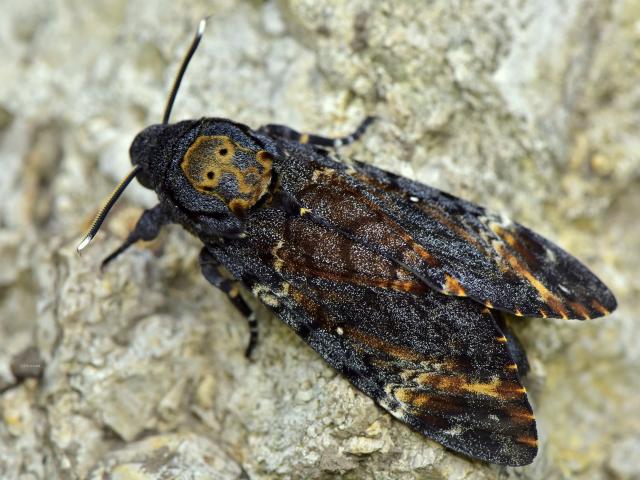The Death’s-head Hawk-moth is the rebel of the moth world. Strikingly large, with a skull-like marking on its thorax and the ability to squeak when alarmed, the moth was traditionally seen as an omen of death.
The Death’s-head is rare; only a handful make it over from the Continent each autumn, but despite this scarcity, its sinister reputation has haunted our literature, art and folklore for generations. It appears as a prophecy of doom in Thomas Hardy’s The Return of the Native; its presence as an ill-advised love token in William Holman Hunt’s 1851 painting The Hireling Shepherd hints of impending trouble between the young couple at the centre of the picture.
 But, most famously of all, the pupa of the moth is left as a grisly calling card by the psychotic serial killer in the 1991 horror blockbuster The Silence of the Lambs (Although the film's director decided to use the pupa of another species because it looked more dramatic!).
But, most famously of all, the pupa of the moth is left as a grisly calling card by the psychotic serial killer in the 1991 horror blockbuster The Silence of the Lambs (Although the film's director decided to use the pupa of another species because it looked more dramatic!).
The moth was even rumoured to be a tormentor of the notoriously unstable King George III who was thrown into one of his infamous bouts of ‘madness’ when two large moths were discovered in his bedroom in his residence in Kew, London in 1801. Their presence caused quite a stir at Court and conspiracy theories started immediately after the sighting. Many believed that the moths had been placed there by people trying to further damage the mental health of the King and destabilise his reign.
The Death’s-head Hawk-moth is only a visitor to Britain. Its real home is in the warmth of southern Europe, Africa and the Middle East. Nevertheless, it is a prodigious traveller and regularly migrates northwards to reach all parts of Europe. So, this huge moth does occur naturally in Britain and was probably more common in the past. One of the favourite foodplants of the moth’s caterpillars is the potato (they eat the leaves, not the spuds) and population levels of the Death’s-head Hawk-moth have undoubtedly been hit by the use of insecticides over the past few decades.

The Death’s-head is most likely to be encountered during autumn with sightings sometimes even in November. So if you are lucky enough to receive an audience with a Death’s-head this Halloween, try not to be scared - this is one of our most fascinating, charismatic and decidedly spooky spectres.
Think you've seen one? Send us your sightings via Twitter.


